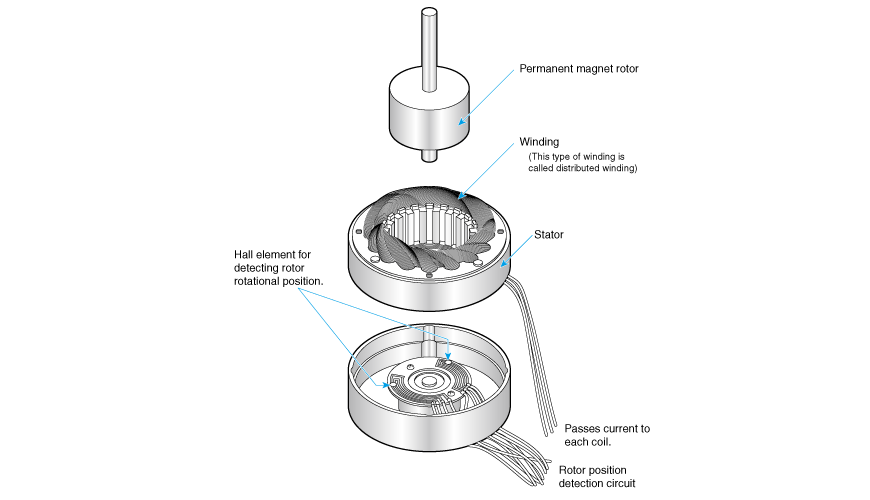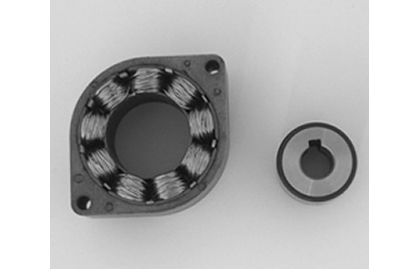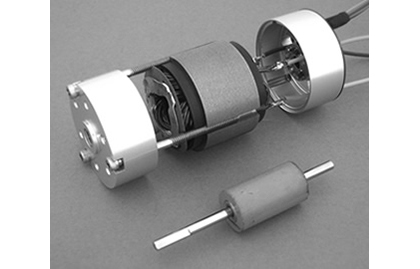2-2-1. What Is a Brushless DC Motor?
Brushless DC motors meet this requirement. As Fig. 2.22 shows, the rotor of a brushless DC motor is a permanent-magnet rotor and the stator is a coil.
The difference from the DC motor (where the coil rotates) is the part that rotates. The principle of rotation, output characteristics, and other basic characteristics are virtually the same between them.
Since the coil does not rotate, brushes and commutators are not necessary. However, it is necessary to devise a means of detecting the rotor's rotational position to switch the current to the coil.
To create a brushless motor, it is necessary to switch the current using a method that is different from the one used in connection with mechanical contacts. Consequently, to drive a brushless DC motor, we switch the coil current by using a drive circuit configured with a semiconductor device instead of using mechanical contacts.
The brushless DC motor has been developed along with the development of semiconductor device, and it cannot rotate without its dedicated drive circuit.
A brushless DC motor is occasionally called a brushless motor ("DC" is omitted).


Fig. 2.22(b) Example of brushless DC motor


